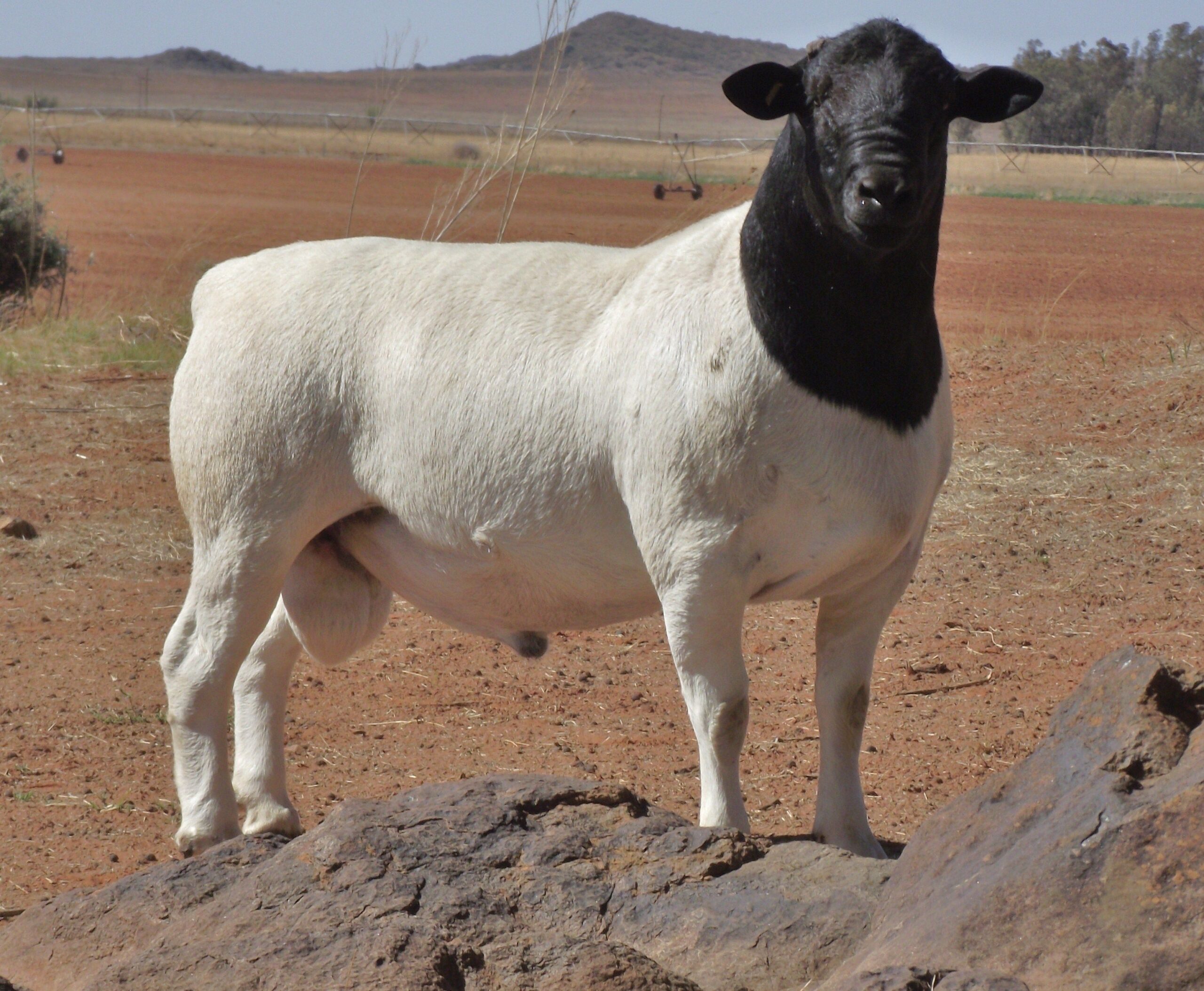Dorper sheep
In South Africa, the Persian sheep, the Dorset sheep, and the Van Rooy sheep were used to create the Dorper breed. This process produced a robust, quick-growing meat breed well suited to areas with insufficient precipitation.
Dorper sheep have white bodies and black heads, and they are very strong and sturdy. The White Dorper has a white head. Lambs of this rapidly maturing, fertile breed are ready for the slaughter at only four months of age. The breed’s skin, which has a smooth grain and no creasing, can be used for leather without the need for shearing. Mature Dorper rams weigh between 90 and 120 kg, and ewes between 50 and 80 kg.
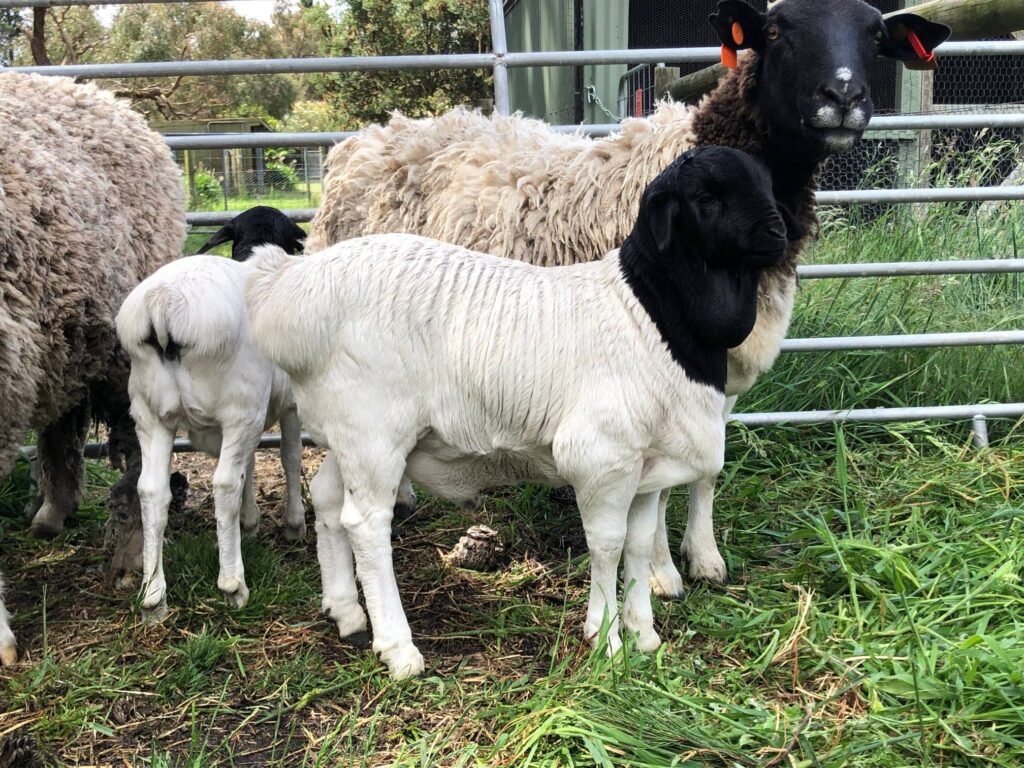
Dorper ewes (Source: rhyniepastoral.com.au)
In addition to being hornless, this breed of sheep is also quite long and has a relatively light coat of hair. Both black and white heads are present in the breed, but the black head is the most common. The ewes are also great mothers because of their strong maternal instincts, ability to adapt, hardiness, rate of reproduction, growth (reaching 36 kg at 3,5 to 4 months), and feed conversion rate.
The Dorper has a year-round breeding season. A good manager can schedule lambing throughout the year. The breed is fertile, and the percentage of pregnant ewes is high. Eight-month lambing periods are possible with good forage and management. In optimal conditions, lambing percentages of 150% and 180% are possible. Under extensive conditions, lambing rates of 100% are expected. In a flock with many maiden ewes, the lambing percentage is around 120% because they only have one lamb. If the lambing percentage is 150% and ewes can lamb three times in two years, a Dorper ewe will produce 1,5 lambs per year.
The Dorper adapts well to different climates and grazing conditions. This breed was originally developed for arid areas, but it is now widespread. The Dorper is hardy and can thrive in conditions where other breeds cannot, and the ewe can raise a quality lamb in harsh conditions. As a strong and non-selective grazer, the Dorper is easy to manage.
Blackhead Persian
It is believed that Somalia or the Middle East were the original homes of the Blackheaded Persian sheep, an ancient meat breed. The Persian sheep has a hairy, fat tail and thrives in hot, dry climates. Long, floppy ears are another goat-like trait shared by hornless sheep. Blackheaded Persians make up the vast majority (90%) of the breed, with redheaded Persians (4%), and speckled Persians (6%). Persians are excellent mothers with an even temperament. There is a high rate of twin births and an 8-month breeding period. Mature rams and ewes weigh approximately 50 and 30 kg, respectively.
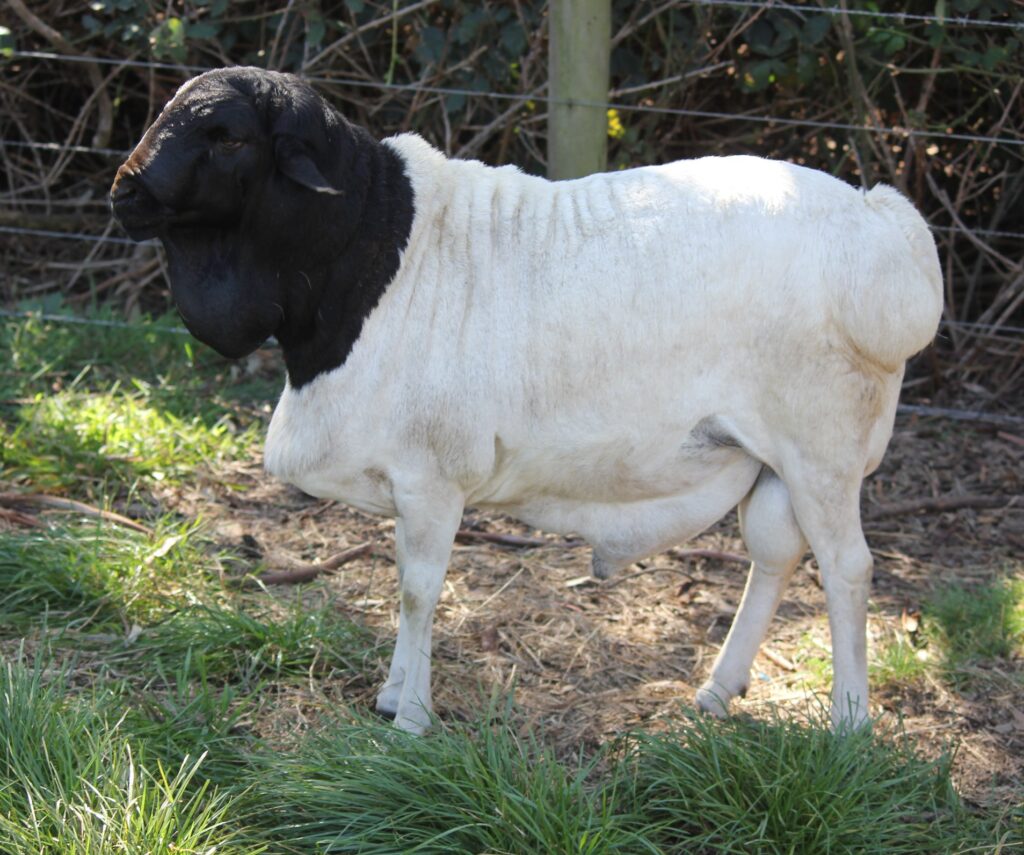
Blackhead Persian ram. (Source: persiansheep.com)
Although the Blackhead Persian variety is raised solely for its meat, the skin can be used to create thin, high-quality leather goods. The disease resistance of the Persian sheep breed has made it a favourite for crossbreeding with other types of sheep in an effort to increase their overall productivity as mutton sheep. The mature weights of Blackhead Persian rams are between 68 and 75 kg, and those of ewes are between 52 and 60 kg.
Ile de France
The Ile de France sheep is a French mutton breed. Commercial farming with this breed only started in the 1970s in South Africa. The animals of this breed tend to be large and stocky. The face and lower legs are not covered in wool. The nose and lips are pink, and the rest of the face is white. Both rams and ewes are hornless (polled).
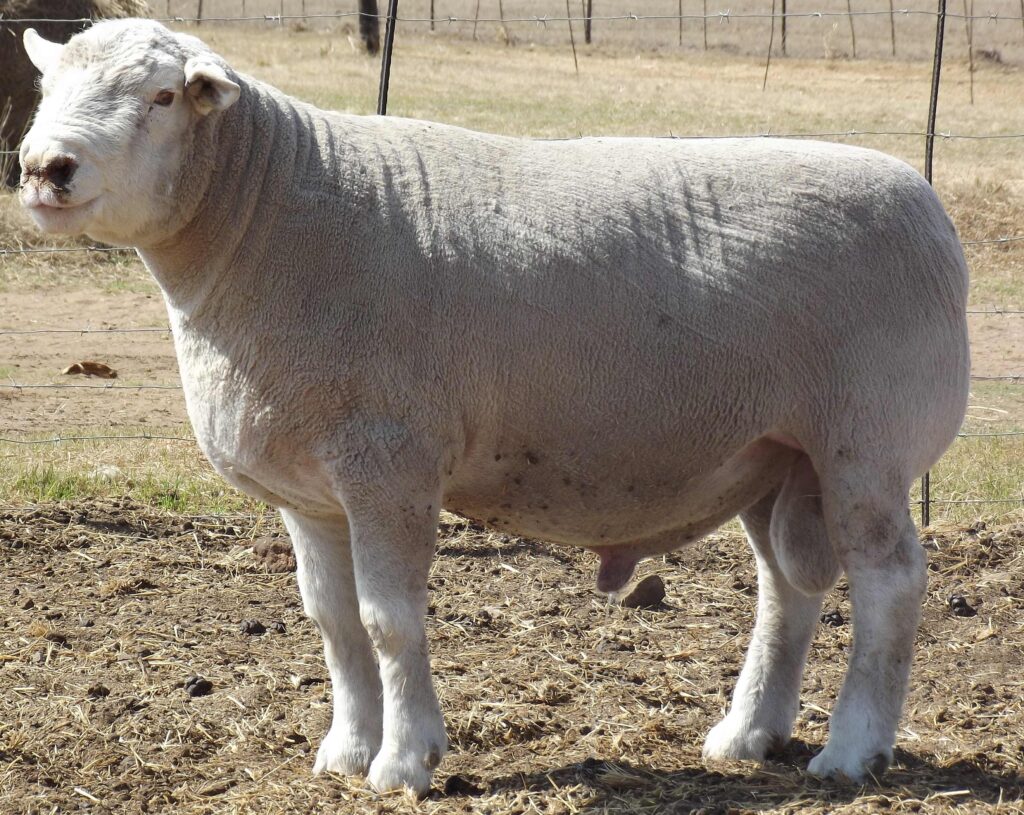
Ile de France ram. (Source: chiledefrance.co.za)
The Ile de France is a large, smooth-bodied mutton breed, producing strong white wool of 23 to 27 microns. Wool can contribute up to 20% of this breed’s income. An average fleece weighs between 4 and 6 kilogrammes, and its staple length is between 7 and 8 centimetres.
However, most consider the Ile de France a meat breed only due to the rams’ use in crossbreeding to produce heavy, early maturing slaughter-ready lambs. The first lambing is at 23 months, with few birthing problems. The Ile de France can be used for their milk and is classified as a dairy sheep in the USA. The mature weights of Ile de France rams are between 100 and 150 kg, and those of ewes are between 70 and 90 kg.
Van Rooy
The fertile Van Rooy sheep is a type of meat sheep that was “developed” in South Africa and bred to perform well in the drier conditions typical of fat-tail breeds, such as those found in Southern Africa.
The Van Rooy is a large, hornless sheep, covered in white hair, and has a thin wool undercoat across its chest and shoulders. Its hefty tail and broad, rounded chest set it apart. Most of the body fat is concentrated in the back and tail.
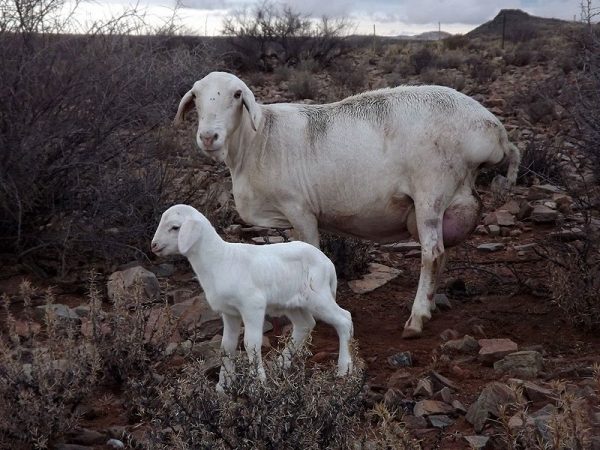
Van Rooy ewe and lamb. (Source: learnnaturalfarming.com)
The Van Rooy has a thick skin and is therefore less likely to be infected by parasites. The mature weights of Van Rooy rams are between 70 and 80 kg, and those of ewes between 50 and 60 kg. The fertile Van Rooy is able to produce and raise lambs, even in harsh environments. Due to their distinct genetic makeup, they are frequently used in hybridisation. The average age for a first birth is 16 months.
Meatmaster
Another South African mutton sheep breed, the Meatmaster, is a cross between the Damara, Dorper, Van Rooy, and Ile de France. The objective was to create a meat sheep that could thrive in veld grazing systems and require minimal care and feeding. In 2007, the Meatmaster was recognised as a separate breed, and in 2008, the Meatmaster Breed Society was established to promote and protect the breed.
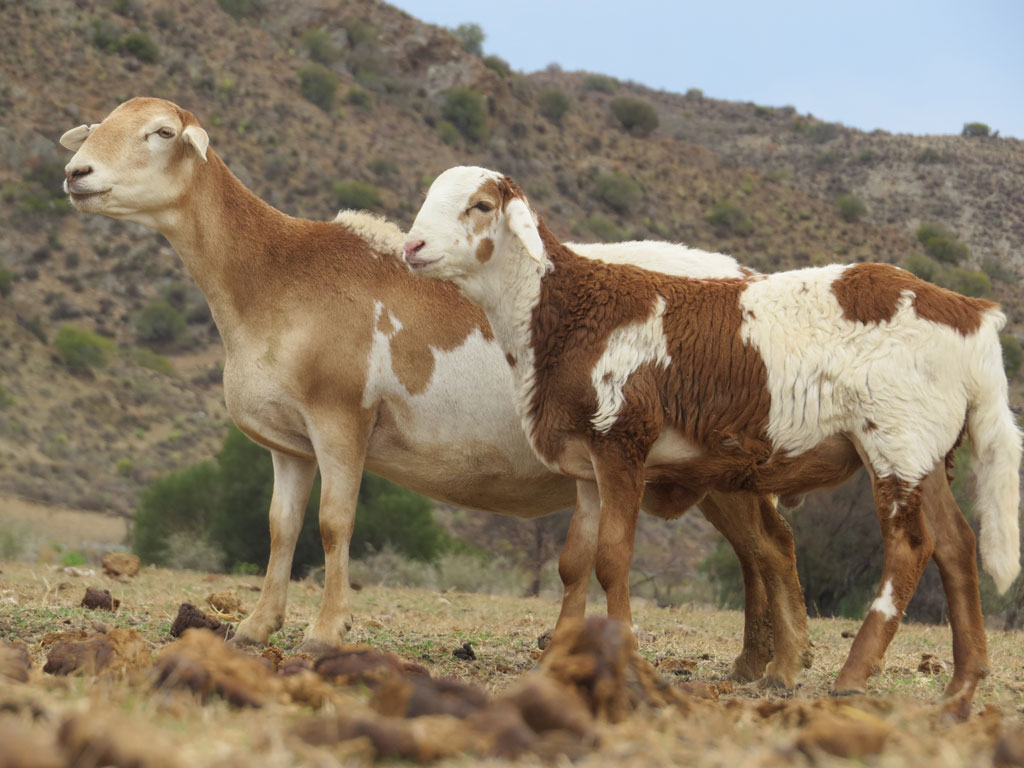
Meatmaster ewe and lamb. (Source: lasarusgamefarm.co.za)
The Meatmaster is a medium-sized, non-fat-tailed sheep with a short, shiny outer coat and a short, woolly undercoat. Weaning weight for a Meatmaster is 27 kg at 100 days of age. At five months old, a Meatmaster lamb weighs about 38 kg, which means it can be slaughtered for a 17,5 kg carcass. A mature Meatmaster ram weighs between 85 and 105 kg, and an ewe between 60 and 70 kg.
References
Breeds of Livestock – Booroola Merino Sheep — Breeds of Livestock, Department of Animal Science. (1996). Available at: http://afs.okstate.edu/breeds/sheep/booroolamerino/index.html
Ngcobo, J.N.; Nedambale, T.L.; Nephawe, K.A.; Mpofu, T.J.; Chokoe, T.C.; Ramukhithi, F.V. An Update on South African Indigenous Sheep Breeds’ Extinction Status and Difficulties during Conservation Attempts: A Review. Diversity 2022,14, 516. Available at: https://doi.org/10.3390/d14070516
Sheep breeds. (2008). Department of Agriculture. Available at: https://www.nda.agric.za/docs/Infopaks/Sheep_breeds.pdf Sheep Farming in South Africa. 2022. Available at: https://southafrica.co.za/sheep-farming-south-africa.html

